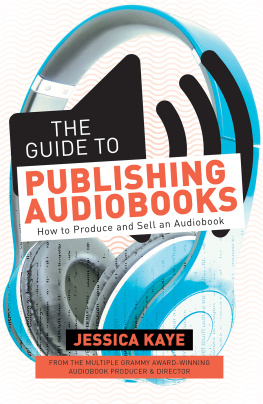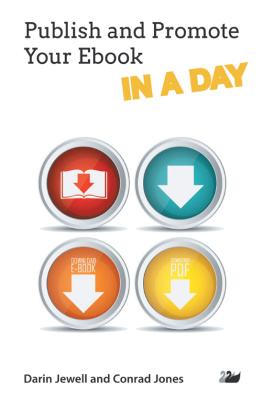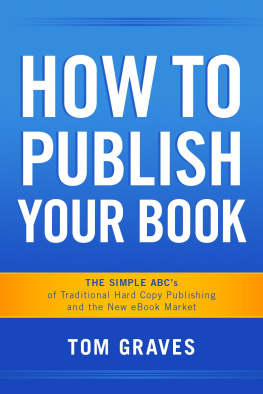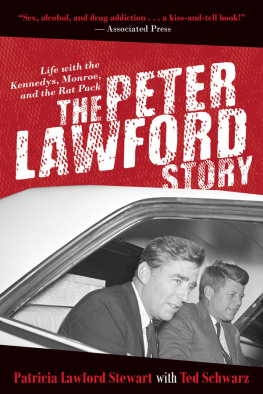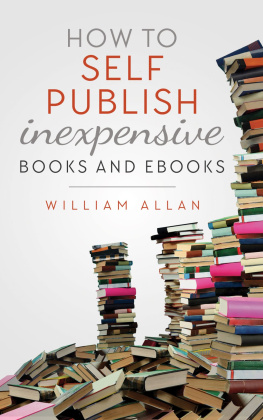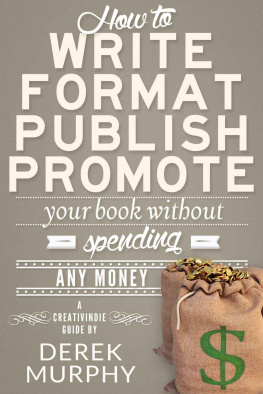How to Publish Your Own Book
Secrets from the Inside Stewart Ferris
Copyright Stewart Ferris 2007 All rights reserved.
The right of Stewart Ferris to be identified as the author of this work has been asserted in accordance with sections 77 and 78 of the Copyright, Designs and Patents Act 1988.
Condition of Sale
This book is sold subject to the condition that it shall not, by way of trade or otherwise, be lent, re-sold, hired out or otherwise circulated in any form of binding or cover other than that in which it is published and without a similar condition including this condition being imposed on the subsequent publisher.
Summersdale Publishers Ltd
46 West Street
Chichester
West Sussex
PO19 1RP
UK
www.summersdale.com
ISBN: 1-84024-519-0 ISBN: 978-1-84024-519-6
Printed and bound in Great Britain.
Contents
Paragraph indents at the start of chapters and after a
How do I design the paperwork for taking book
What is self-publishing?
As an author you already know that it isnt easy to persuade a publisher to splash out a considerable chunk of money on editing, designing, printing and marketing your book. It can take years before you strike it lucky, and even if you finally get a contract signed it will be a reminder of who is in charge: the publisher. They will typically hang on to as much as ninety per cent of the income from sales of the book. They have to. They have to pay staff, office bills, print bills, marketing bills and the mortgage on their second home in France. That leaves you, the author, coming to terms with the reality that you wont be able to afford to give up your day job on the royalties from one book alone. Even if you had a dozen published books, assuming they had average sales rather than being bestsellers, you would have to think twice before telling your boss where to stick it and marching confidently home to your new working environment; your shed.
Why not turn the whole thing on its head and put yourself in the position of publisher as well as author? That way youll keep that ninety per cent as well as your authors ten per cent. Deals dont get much sweeter than that, do they? But, of course, theres a time and a financial investment associated with publishing your own book, and with any investment comes risk. By committing your own cash to the project you have to be prepared for the possibility that you will never see that money again.
It's something that hap publishers too: not eve sell enough copies to ear Publishing is about ga even been referred to as Experience in the book available to reduce that r in that department then that you'll have a bette profit by betting two m than by publishing a boo
Dens to all mainstream r y title they produce will i back their investment. mbling. Publishers have 'bookies with A-levels'. ndustry is the only tool isk, and if you're lacking it's reasonable to say ;r chance of making a onths' wages on a horse k.
Self-publishing means that you, the author, pay for and control all aspects of turning your written words into a format suitable for dissemination amongst the general public. The format could be a printed and bound book or an electronic simulation of a book, known as an eBook, which can be bought and downloaded from the Internet.
Whichever format of book you create, you will be starting a publishing company. Most people do this as sole traders, with no legal formalities to worry about when starting up. Printing isnt difficult, either - you just have to pay a printing firm to do it.
So why do you need this book to help you publish your masterpiece?
What you do between finishing the writing of your book and handing it over to a printer can be the difference between success and failure. Success means a profitable project that actually results in people reading your work; failure means you end up with a pallet of books that sits in your garage gathering dust until you eventually decide to use the unsold copies as firelighters. Worse still, failure means that hardly anyone reads your book.
Theres no point in spending your life savings on publishing a book if no one buys it. You want people to enjoy your writing, to think of you as a bona fide author. You want to recoup your investment so that the exercise doesnt appear to your friends as folly.
The self-publishing secrets that can mean the difference between success and failure will be revealed in this book. How do I know those secrets? In 1992 I co-founded Britains first company to offer all the services an author needs to publish their own book. Over the next decade we ran this selfpublishing company alongside our main publishing business, helping hundreds of authors to become publishers and producing books for them in all genres, some of which won awards for selfpublishing.
Ive watched authors make terrible mistakes in their cover designs which have cost them dearly in terms of lost sales (they would often insist on using their own artwork or photo on the cover, no matter how inappropriate or amateurish). Ive seen books poorly edited and full of irrelevant content. But most of all Ive seen authors who dont have the faintest idea how to sell their books when they arrive on the lorry from the printers.
Ill tell you all you need to know about the book trade, how to publicise your book (for free), and how to sell it both to shops and to customers directly. Youll also learn the essentials of page layout, cover design, editing and ways to ensure your book does not look self-published - because to a book trade professional, self-published books often stand out a mile and for all the wrong reasons.
This guide will provide you with the equivalent of years of experience in the book industry. The insider tips on the following pages are crucial in reducing the level of risk to which your financial investment will be exposed. Ill start by explaining how to get your book printed and bound. Depending on how much of the process you decide to outsource, some chapters may not appear to be as relevant to you as others, but Id strongly recommend reading this book as a whole because you can use the information to talk knowledgeably to any freelancers you hire and to demonstrate that you understand what they are doing and that you expect professional results. Since publishing a book is an expensive process, its necessary also to explain how to recoup that investment by maximising the number of copies sold. Furthermore, well be looking at other sources of income from which publishers can benefit: there are many potential revenue streams that ownership of copyright text can generate, and most self-publishers are completely unaware of them.
The final part of this boc need to know about pu and eBook editions are there's nothing wrong on sale at the same time
k covers everything you blishing an eBook. Print not mutually exclusive: with having both editions
Reasons why people write books
1. A journey of self-discovery
2. The challenge of completing a whole book
3. A cathartic method of coming to terms with life experiences
4. The desire to tell a good story or impart specialist knowledge
5. The hope that the book will make a profit
6. The satisfaction of knowing that people are reading the book
Of all those reasons, the satisfaction that comes when people read your book is the most powerful motivation of all. It's one thing to know that your friends and family are reading your book, but to find out that a complete stranger has bought it, read it and enjoyed it is a unique thrill that only a published writer can know. Selfpublishing can't guarantee that this thrill will happen to you because the process is full of potential pitfalls that can prevent your book achieving a wide exposure, but with this book to guide you safely through them you'll have the best possible chance of success.
Next page

